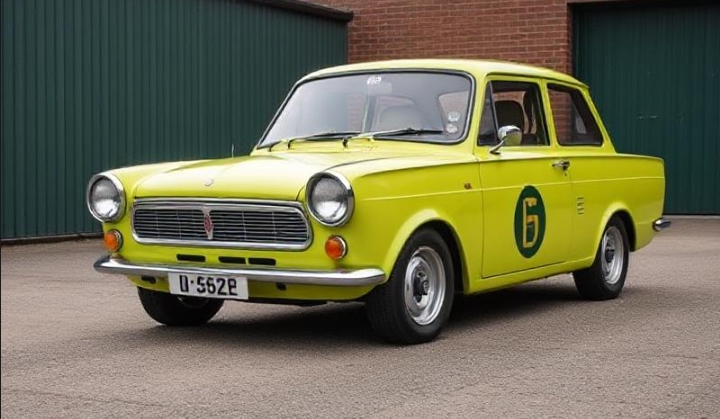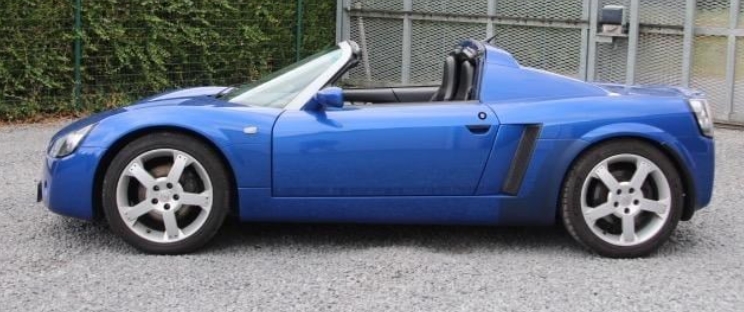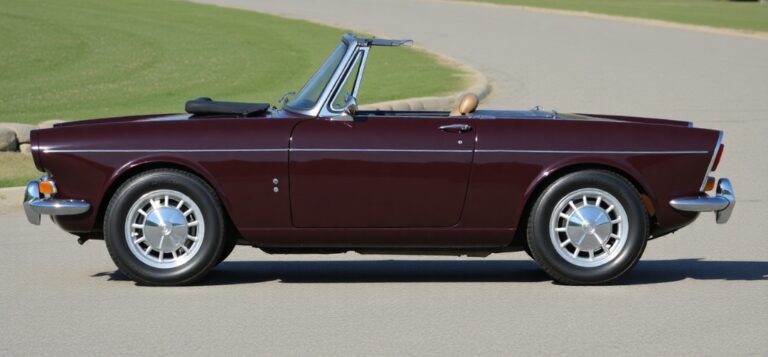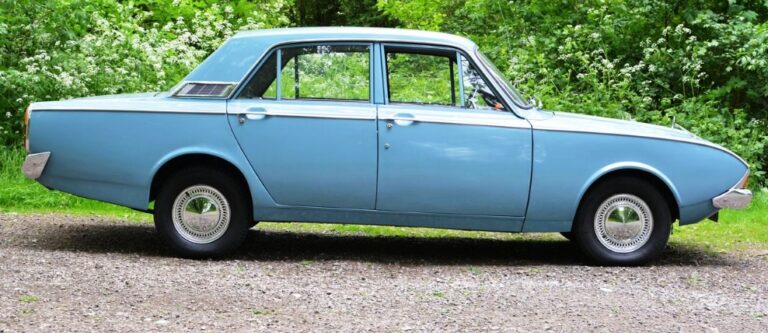The Evolution of the Hillman Imp: A Classic British Car
The Hillman Imp is a fascinating vehicle in the history of British motoring. Manufactured from 1963 to 1976, the Imp was rooted in a desire to create a compact, economical car that could compete with the burgeoning market of small family vehicles in the 1960s. Over its production run, the Hillman Imp evolved in design, engineering, and trim levels, leaving a lasting legacy in automotive history.
Origins and Introduction (1963)
The Hillman Imp was the brainchild of the Rootes Group, a British automotive manufacturer. Desiring to create a competitor to the Mini and other small vehicles, the Imp was designed as a small, economical alternative to larger vehicles. Production began in 1963 at the Rootes’ factory in Linwood, Scotland. The design was undoubtedly creative; the Imp featured a rear-engine configuration, similar to the Volkswagen Beetle, but with a smaller footprint.
The initial model was an economical, stylistically modern car marketed mainly to young families and commuters. Priced competitively, it quickly drew interest. The first version boasted a 875cc four-cylinder engine capable of delivering a modest 38 bhp. It was spacious for a small car and featured rear seats with enough room for additional passengers.
Initial Models and Trim Levels (1963–1965)
Upon its introduction, the Hillman Imp had several trim levels which initially included:
- Hillman Imp Standard – The base model that provided essential features.
- Hillman Imp Deluxe – An upgraded version of the standard model with enhancements such as better trim and plastics.
By 1965, the Imp had also garnered a reputation for its nimble handling and practicality. The Hillman Imp became popular in the UK, and also managed to capture a portion of the export market, particularly in Europe.
The Imp’s Key Updates (1965–1969)
In 1965 and 1966, several notable updates were introduced:
- The Hillman Imp Sport, launched in 1966, featured a sportier design with more power from a larger engine. The engine was tuned to deliver 51 bhp, which made it more desirable for those interested in a spirited driving experience. This model included sportier trim and upgraded suspension for better handling.
- The Hillman Imp Californian arrived in 1966 to tap into the rising trend for convertibles. The Californian featured a soft-top roof and offered an exhilarating driving experience, all while maintaining the hallmark comforts of the Imp.
In terms of trim, there was an expanded offering that included the Hillman Imp GT which had upgraded interior features and sportier aesthetics. By the end of the 1960s, the Imp’s evolution led it to become synonymous with British youth culture.
The Changes of the ’70s (1970–1976)
The onset of the 1970s saw the arrival of new models and improvements. The Imp witnessed a strategic move to adapt to the changing demands of British consumers as more customers began to seek vehicles that offered reliable fuel economy amidst the oil crisis that affected the world.
The Hillman Imp 929 debuted in 1970, boasting a larger 1.0L engine. With increased performance and an updated body design, it became one of the final iterations of the Imp. Other notable versions included the:
- Hillman Imp Automatic – Introduced in 1972, this model featured a three-speed automatic transmission, targeting drivers who preferred ease of operation.
- Hillman Imp H理 – A model aimed at markets outside of the UK, particularly in countries such as Australia where the Imp found a favor due to its compact size and efficiency.
- Hillman Imp Super – By the mid-1970s, the super variant emerged, incorporating quality interior materials, better sound insulation, and aesthetic upgrades that appealed to families.
While the Imp was generally well-received, it struggled against stiff competition during the mid to late 1970s from rivals such as the Ford Fiesta and the Vauxhall Chevette, which began to dominate the small car market.
.
If your radiator or cooling system isn’t up to par, you won’t be getting very far!
Tips for Keeping Your Automobile Cool
.
The Drive to Closure (1975–1976)
As market dynamics shifted and economic pressures mounted, the Rootes Group felt the strain. The closure of the Linwood factory was on the horizon, signaling the end of the Imp’s production. Despite various attempts to modernize the Imp and update components, sales were dipping, ultimately leading to the cessation of production in 1976. The Imp left an indelible mark, a blend of charm, practicality, and unique engineering that catered to a particular kind of driver.
Legacy and Impact
Exit from the production line did not diminish the Hillman Imp’s significance in automotive history. The Imp is remembered today both as a novelty and an emblem of its era—an innovative solution for many families and a convergence of practicality and economic design. Today, it is celebrated among classic car enthusiasts for its quirky charm and the nostalgia of 1960s motoring.
Many Hillman Imps have survived due to dedicated owners who value these cars for their uniqueness. Restoration projects have reignited interest in the model, leading to a rise in classic car shows featuring the Imp, ensuring that its spirit remains alive, albeit on modern roads.
Conclusion
The Hillman Imp’s journey from a fresh entrant in 1963 to a well-recognized name by 1976 tells the story of an ambitious design pursuit that encapsulated the innovative spirit of the 1960s and early 70s in Britain. Its various models, from the Standard to the California and ultimately the Super, enhanced its allure and adaptability in a rapidly changing automotive landscape. While the Hillman Imp’s production ceased, its legacy as a pioneering small car lives on—an intriguing chapter in the narrative of British automotive history.







